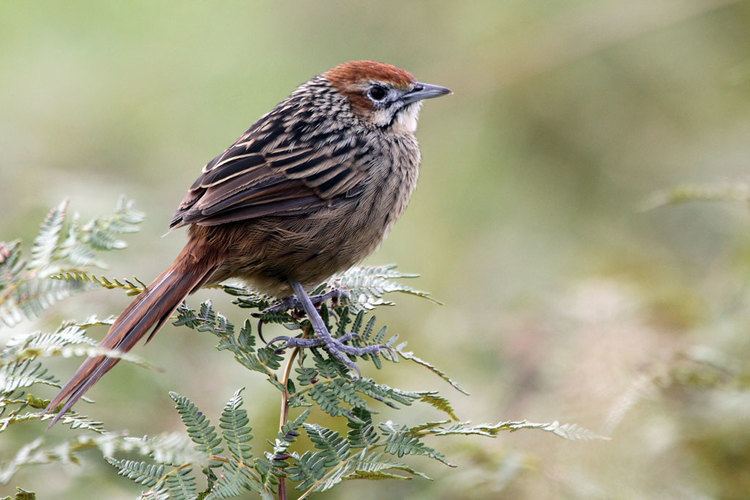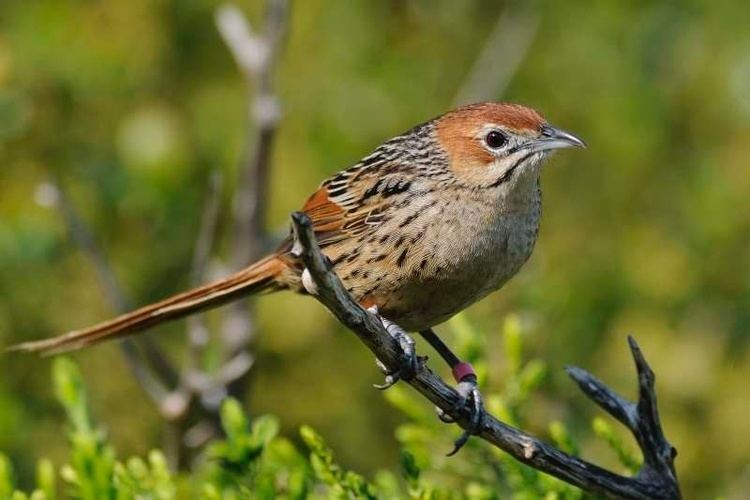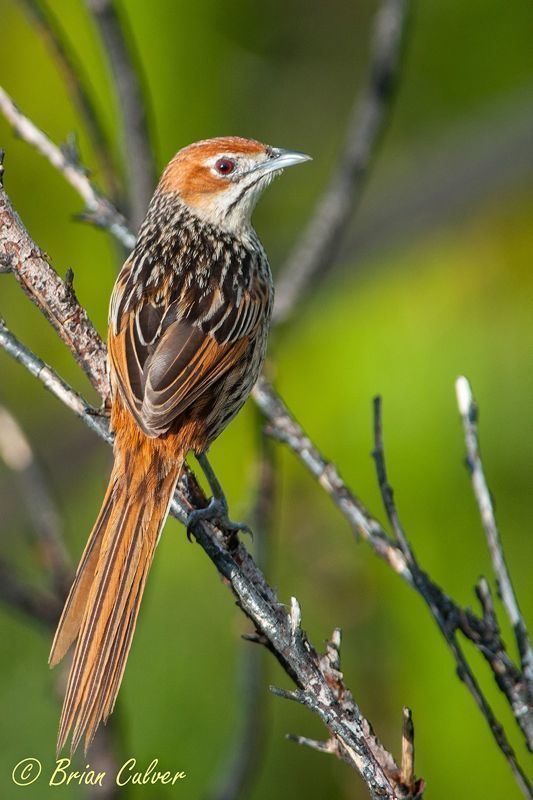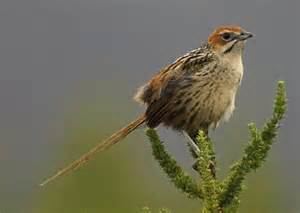Scientific name Sphenoeacus afer Higher classification Sphenoeacus Order Passerine | Phylum Chordata Rank Species | |
 | ||
Genus SphenoeacusStrickland, 1841 Similar Barratt's warbler, Little rush warbler, Long‑billed crombec, Yellow‑throated woodland warbler, Knysna warbler | ||
Cape grassbird
The Cape grassbird or Cape grass warbler (Sphenoeacus afer) is an African warbler found in southern Africa.
Contents
- Cape grassbird
- Cape grassbird singing
- Taxonomy
- Etymology
- Description
- Distribution and habitat
- Behaviour
- Conservation status
- References
Cape grassbird singing
Taxonomy

Formerly placed in the Sylviidae family, it is the only member of the genus Sphenoeacus. The taxonomy of the "African warblers", an assemblage of usually species-poor and apparently rather ancient "odd warblers" from Africa, is currently in a state of flux.
Etymology
Gr. sphen wedge; oiax helm/rudder, in reference to the wedge-shaped tail
Description

The Cape grassbird is 17 to 19 centimetres (6.7 to 7.5 in) long and weighs around 30 grams (1.1 oz) Its crown and face sides are rufous, except for white around the eye, and it has black malar and moustachial stripes on its white throat. The upperparts are brown with heavy streaking and the long tail is a lighter brown while the underparts are whitish with blackish spotting. The sexes are similar, but the juvenile has a streaked cap and is duller than the adult. The song is jangling and musical, and the call is a nasal pheeeo.

The long, pointed, straggly tail, chestnut cap and facial stripes are diagnostic of Cape grassbird. It is much larger than any cisticola, and the heavily streaked back and the pointed tail eliminate confusion with moustached grass warbler.
Distribution and habitat

The Cape grassbird breeds in southern Africa in South Africa, Lesotho, Mozambique and Swaziland with an isolated population in eastern Zimbabwe. It is a common species of coastal and mountain fynbos and long, rank grass on mountain slopes or in river valleys.
Behaviour

The Cape grassbird builds a cup nest flow in vegetation. This species is monogamous, pairing for life. Its eggs have one of the slowest rates of embryonic development amongst Southern African species.
The Cape grassbird is usually seen alone or in pairs, moving through vegetation foraging for insects and other small invertebrates.
Conservation status
This common species has a large range, with an estimated extent of 390,000 square kilometres (150,000 sq mi). The population size is believed to be large, and the species is not believed to approach the thresholds for the population decline criterion of the IUCN Red List (i.e. declining more than 30% in ten years or three generations). For these reasons, the species is evaluated as of least concern.
